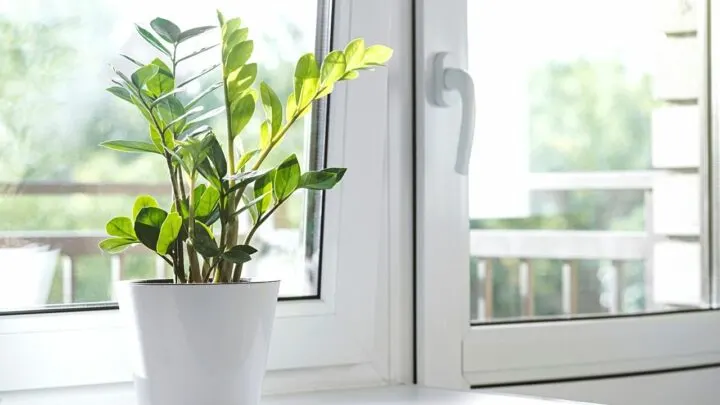Even though ZZ plants are commonly known for being low maintenance according to the University of Vermont, they can still fall prey to plant issues we all experience from time to time.
That is why growers might be confronted with the question “Why is my ZZ plant turning yellow?
The ZZ plant is also called Zanzibar Gem or Zamioculcas zamifolia by its botanical name says the University of Connecticut.
The most common problem you’ll likely encounter with a ZZ plant is yellowing leaves.
It can be difficult trying to narrow down the exact cause of this but that’s what this article is for.
Below, I will cover several potential causes of yellowing leaves which will hopefully cure your ZZ plant and have it looking glossy and green again.
Why is My ZZ plant Turning Yellow?
ZZ plant leaves turning yellow could be because of overwatering or root rot from a buildup of moisture. Too much sunlight may turn the leaves yellow or even burn them. You’ve got to watch out for sap-sucking pests too.

Why is My ZZ plant Turning Yellow
Potential Causes of Yellowing ZZ Plant Leaves
1. Overwatering
One of the reasons ZZ plants are ideal for inexperienced plant owners is that they don’t require regular watering.
If you forget to water it for a week or 2, it generally doesn’t mind and it will survive without any repercussions.
But overwatering is commonly the culprit behind plant deaths amongst all plant owners.
How often should they be watered?
ZZ plants are often watered on the same schedule as other houseplants. This is the wrong approach.
They really only need to be watered enough to survive. If you think that your plant needs water, check the top half of the soil.
If this is bone dry, it probably needs a drink.
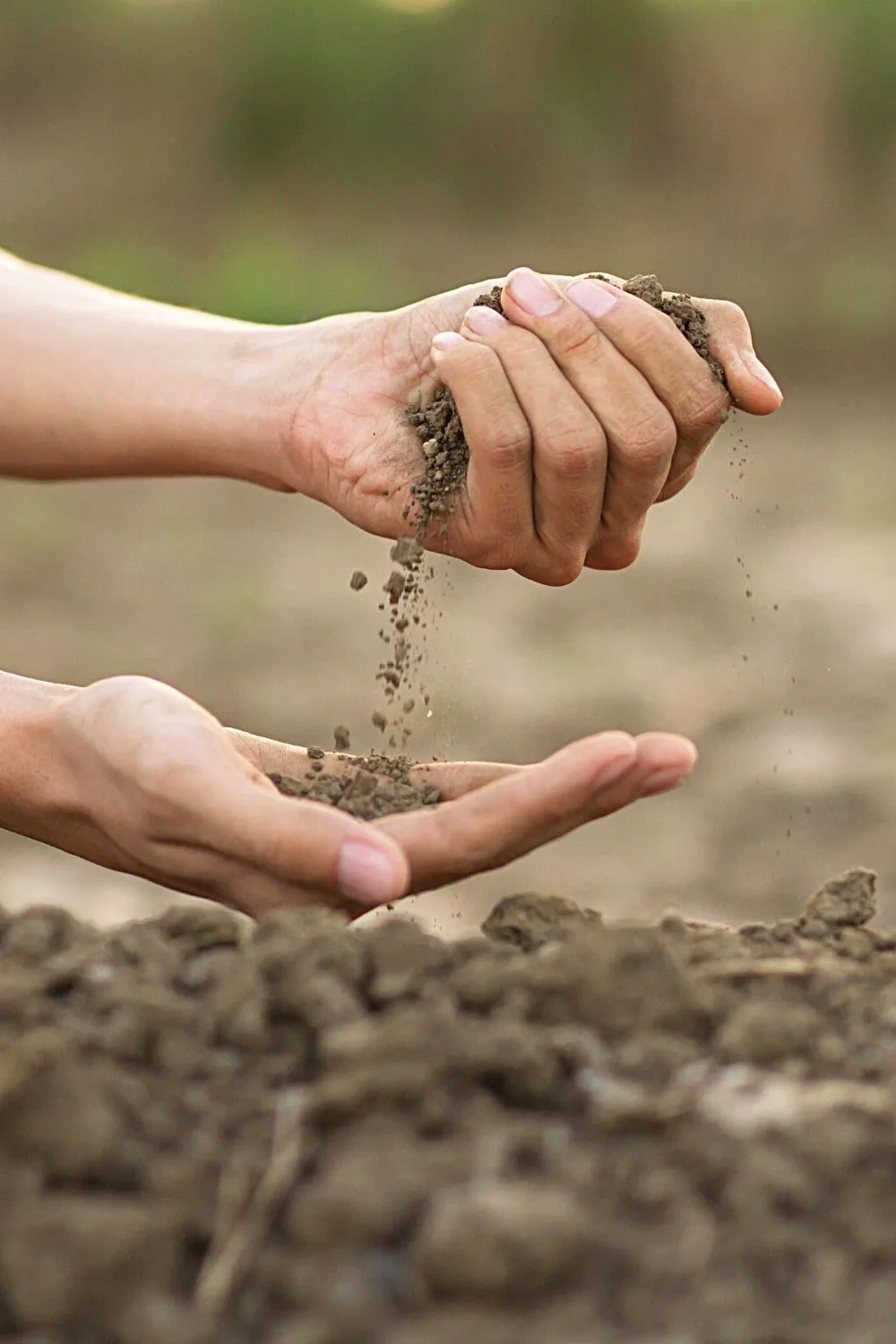
Check your ZZ plant’s soil if it’s dry. If it is, it’s time to do some watering
It can take some time to get used to the neglect that ZZ plants thrive on but once you’ve got it nailed, you should see your plant coming back to life again.
2. Root Rot
Root rot is another common cause of plant demise.
When roots are sat in water or a very moist atmosphere, they can begin to decay which obviously then has a negative effect on the plant itself.
It can also be caused by a fungus in the soil which becomes active once the plant is watered.
How to Prevent ZZ Plant Root Rot
Follow the steps mentioned above to water your ZZ plant effectively and root rot shouldn’t be a problem.
Next, choose a pot with plenty of drainage holes in the bottom so that the water doesn’t sit in the pot, rotting the roots.
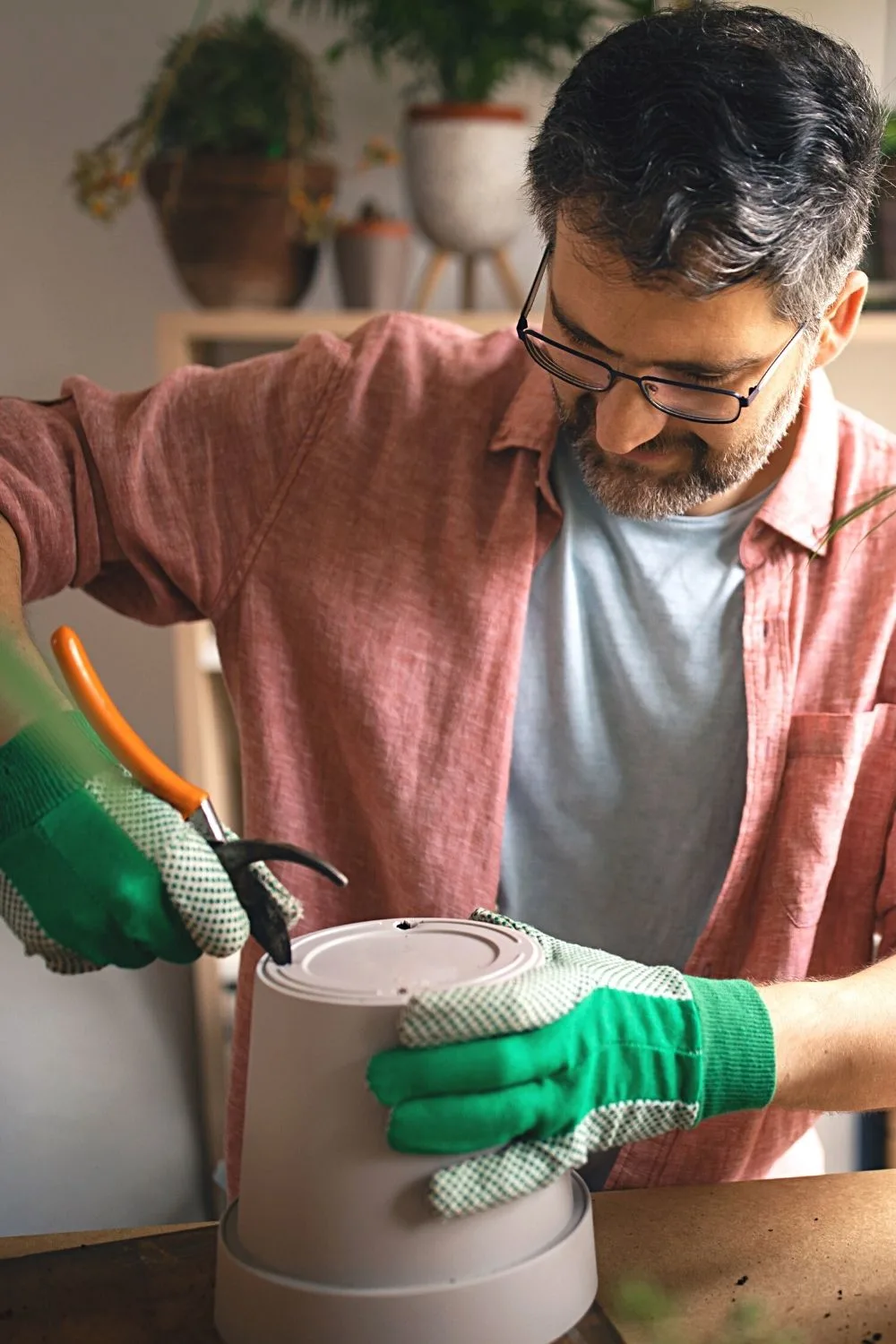
Use a pot with plenty of drainage holes so your ZZ plant’s roots won’t rot
The pot should also be in a saucer or dish so any excess water can be discarded easily.
The soil is also important. Make sure it’s a good drainage soil otherwise it will hold on to any water and be permanently moist.
How to Get Rid of Root Rot in your ZZ Plant
Remove the plant from its pot and carefully get rid of as much soil as possible.

The first step to getting rid of root rot in your ZZ plant is to remove it from its pot, ridding as much of the soil
Next, rinse the roots gently under running water so it’s easier for you to identify which roots are damaged.
Once you’ve found the rotting roots, remove them with clean pair of scissors or a sharp knife.
If a lot of the root system is damaged, you may have to also remove up to one-half of the plant’s leaves.
This will give your ZZ plant a better survival chance as it won’t need to use up its energy in supporting many leaves.
Also, make sure you treat the pot the plant was in. Rinse it with a bleach solution to kill any fungus that could have been growing in the soil.
3. Lighting
It’s important that all plants receive the right light amount. It’s vital for their growth and to ensure that they’re healthy.
The ZZ plant is somewhat of an enigma. Unlike other household plants, it thrives in lighting conditions that range from low to moderate.
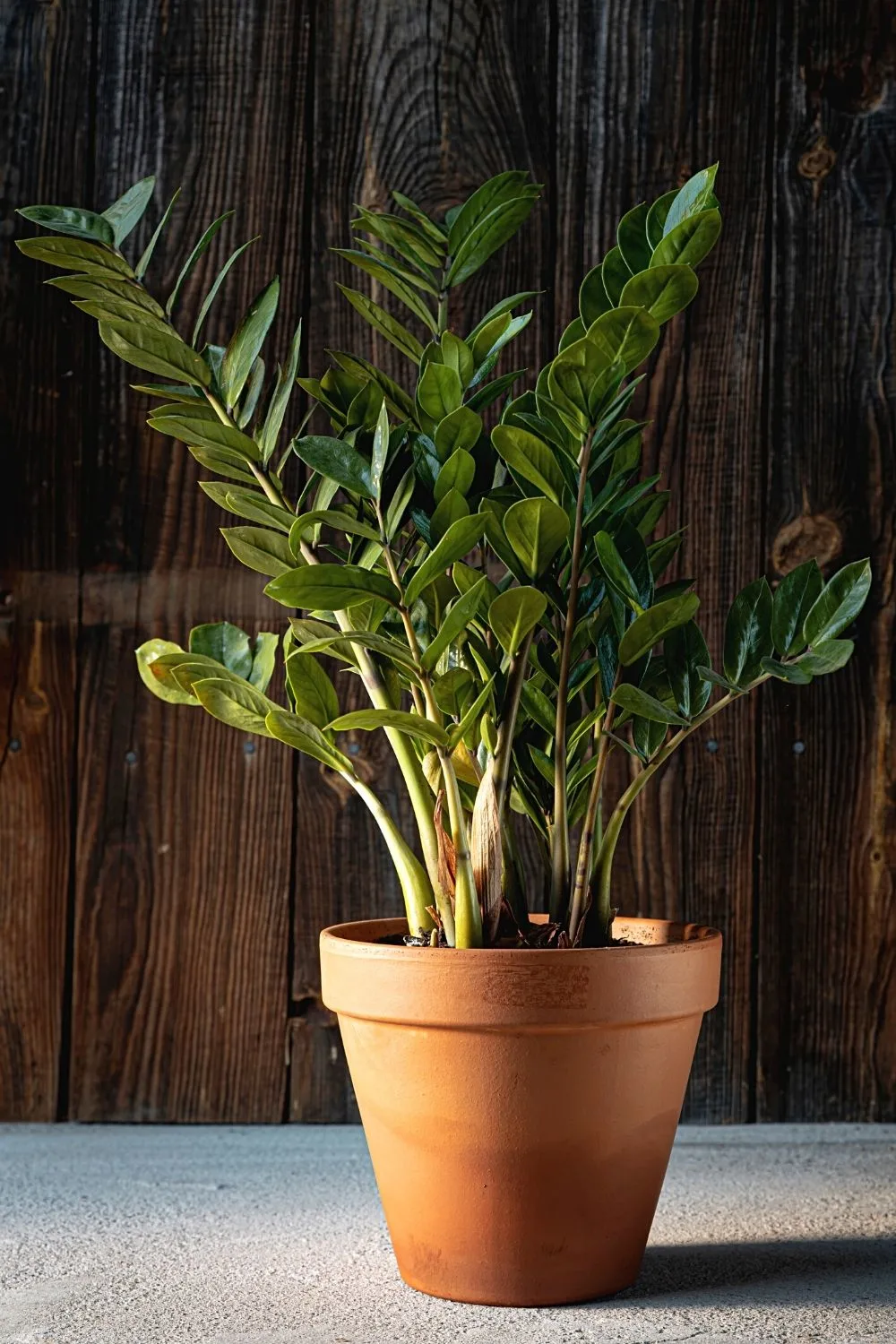
ZZ plants thrive in low to moderate lighting conditions
If you’re placing it in a place with too much sunlight, the leaves could start to turn yellow.
What are the correct lighting conditions for a ZZ plant?
Find a room that has a darkened corner in it. If you couldn’t imagine a plant being able to survive there, it’s probably perfect for a ZZ.
If the plant is on a windowsill in direct sunlight, the leaves will turn yellow or start to burn. Remember that less light is much better than too much light.
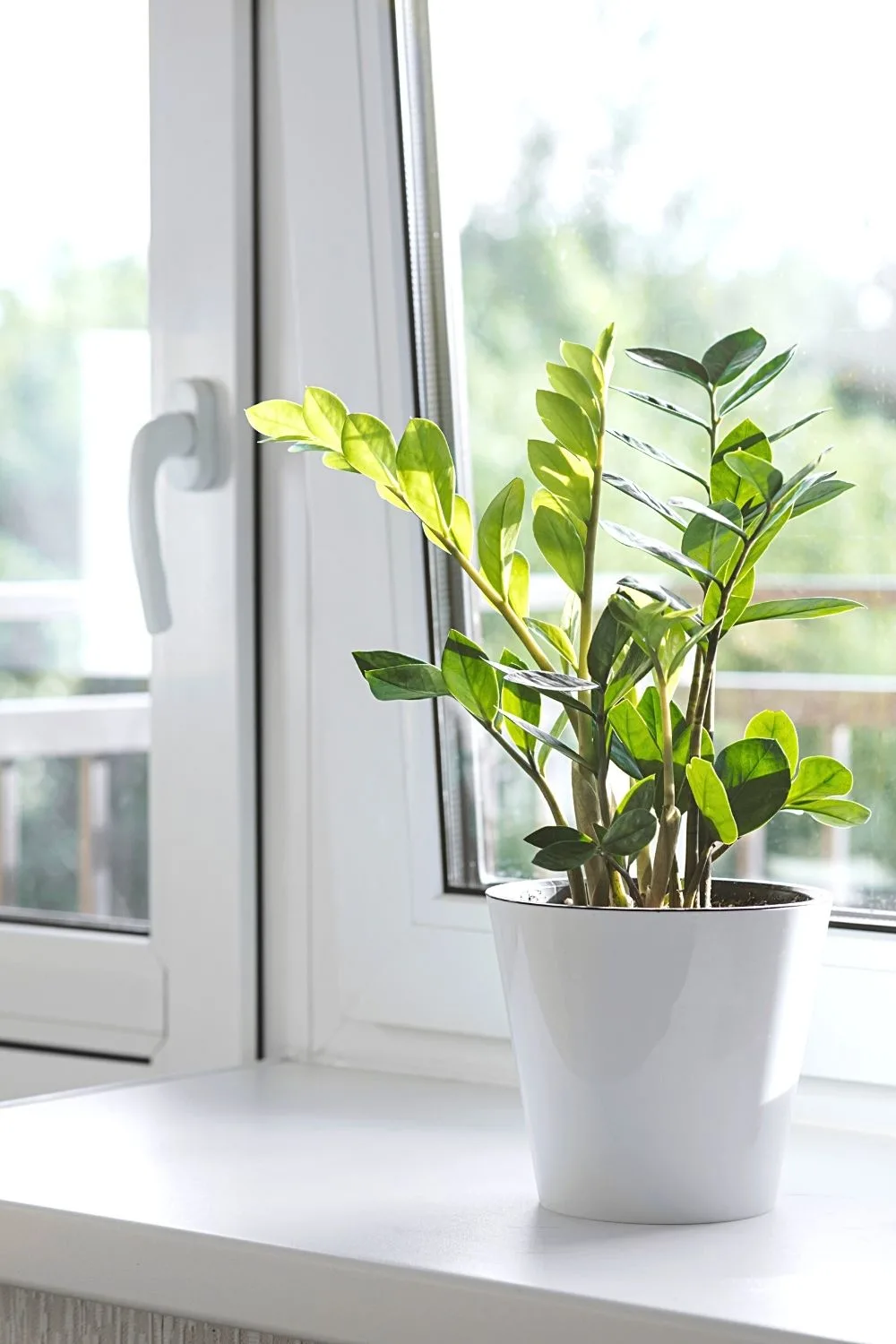
Placing your ZZ plants on a windowsill receiving direct sunlight can cause burning, ultimately causing yellow leaves
You’ll even have to adapt your space to accommodate your plant.
If you can’t find the perfect spot, moving it around the room as the sun moves is the best solution.
4. Pests
Pests are the nightmare of anyone who owns a plant. Once an infestation becomes full-blown, it can take forever to get rid of them once and for all.
Try and remember to dust your plant leaves often and check your plants once a week to check for signs of pests.
The earlier they’re caught, the easier it will be to get rid of them.
What kind of pests could be living on my plant?
It could be spider mites. They’re sap-sucking bugs that will drain the moisture from your plant.
No matter how much water you introduce to your ZZ plant, the spider mites will suck it out.
You might see small feeding marks on the underside of the leaves once you closely inspect them. The longer these bugs are left to feed, the more likely it is that the leaf will turn yellow and fall off.
Another option is mealybugs. They feed on the plant juices of houseplants and if left untreated, could cause irreversible damage to the plant.
How do I get rid of these mealybugs and spider mites?
The obvious solution is a pesticide. They’re readily available to buy at garden centers or even online.
However, they’re not for everyone and there are different home remedies you can test on your pest-infested ZZ plant.
Dishwashing soap, rubbing alcohol, and even vinegar are great at getting rid of those pesky pests.
Once you’ve figured out the type of bug you have, you should be able to treat your plant effectively.
It can be dismal to find yellow leaves on a plant. But the cause is usually easy to figure out and remedy. Your ZZ plant will definitely be healthy again in no time.

Daniel has been a plant enthusiast for over 20 years. He owns hundreds of houseplants and prepares for the chili growing seasons yearly with great anticipation. His favorite plants are plant species in the Araceae family, such as Monstera, Philodendron, and Anthurium. He also loves gardening and is growing hot peppers, tomatoes, and many more vegetables.

